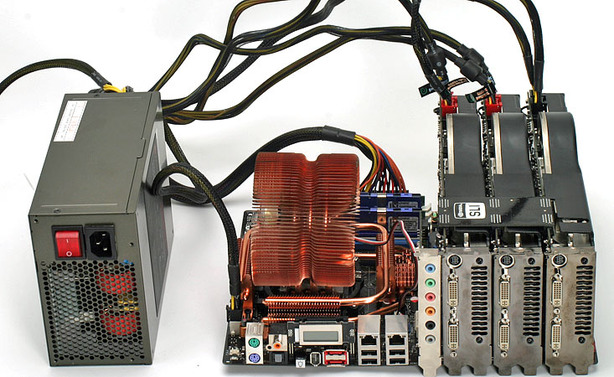First Look: Nvidia 3-way SLI on nForce 680i
December 13, 2007 | 14:01

Test Setup:
As always, we did our best to deliver a clean set of benchmarks, with each test repeated three times -- the average of those results is what we're reporting here. In the rare case where performance is inconsistent, we continued repeating the test until we got three results that were consistent.Due to the short time we've had with the hardware, we've only tested three different configurations in a limited selection of games.
- 3x Nvidia GeForce 8800 Ultra 768MB in 3-way SLI -- operating at their default clock speeds of 612/1500/2160MHz using Forceware 169.18
- 2x Nvidia GeForce 8800 Ultra 768MB in SLI -- operating at their default clock speeds of 612/1500/2160MHz using Forceware 169.18
- Nvidia GeForce 8800 Ultra 768MB -- operating at its default clock speeds of 612/1500/2160MHz using Forceware 169.18

Games Tested:
We used the following versions of the games listed to have a quick look at the performance of Nvidia's 3-way SLI configuration:- Crysis, version 1.1.1.5767 with DirectX 10 and DirectX 9.0*
- BioShock, version 1.0 with DirectX 10 and DirectX 9.0
- Company of Heroes: Opposing Fronts, version 2.1.0.3 with DirectX 10
- Enemy Territory: Quake Wars, version 1.1.0

MSI MPG Velox 100R Chassis Review
October 14 2021 | 15:04








Want to comment? Please log in.